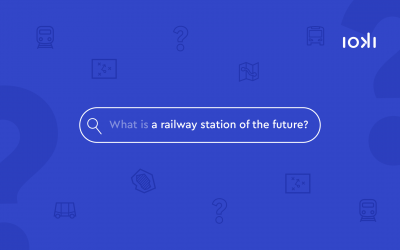1. Mobility will become more autonomous – in two senses of the word.
In recent years, everything in the mobility industry seems to revolve around the topic of autonomous driving as the vision of the future. Admittedly: The idea of a driverless vehicle that takes passengers safely and comfortably from A to B has definitely considerable potential – for the experience of the passenger, for safety on the roads and finally also for the economic viability of new forms of mobility, especially in the area of on-demand.
In a second step, however, the understanding of mobility in general can also be transferred to the term “autonomous”. Because along with new, digital opportunities, mobility also becomes independent and emancipates itself as a multi-layered phenomenon from its classical cornerstones, for example from car-based individual transport. In particular this can be seen in the current changes that are taking place in metropolises. The city of Amsterdam, for example, has announced that it intends to eliminate up to 10,000 parking spaces over the next few years, thus restoring valuable living space for citizens.
2. Mobility is becoming more cooperative.
All the e-scooter providers that have sprouted from the ground in recent months are proof enough: in addition to established players, more and more start-ups with innovative mobility solutions are also running onto the market. However, they rarely attack the core products of traditional companies as direct competitors, but rather integrate themselves profitably into the mobility chain. In this way, existing services such as classic public transport can be meaningfully supplemented and strengthened by new forms of micro-mobility.
The great challenge arising from this encounter is the development of strategic partnerships. After all, all the new solutions only help if they are conceived, developed and made available to the customer holistically and in interaction with the existing ones. As a result, mobility is increasingly developing in the direction of platform economy.
3. Mobility is becoming more intermodal and networked.
In addition to the demand for a pronounced attitude to cooperation the emergence of new players, whose potential derives primarily from digitization, brings with it two further implications: digital networking not only enables more, but also completely new mobility. Thanks to the permanent communication between traffic participants, the surrounding infrastructure and the vehicles, as well as the modern possibilities for data analysis, a completely new mobility cosmos is emerging. This is characterized in particular by a data-driven, continuous and real-time situation analysis: Where and to what extent must which mobility needs and demands be met? Incidentally, this also prepares the ground for increasingly successful on-demand mobility. All in all, this means that data-based mobility analyses enable more efficient, demand-oriented and greener transport.
At the same time, digitisation ensures that the individual mobility chain is split into several components and passages: platforms, networks and the like can be used to easily combine different means of transport for the various sections. The result: an optimised route chain along the most efficient and sustainable means of transport.
4. Mobility is also becoming a social issue.
The concept of mobility is changing: While the car was one of the most popular status symbols for decades, today it is increasingly losing importance. Particularly in cities, an ever-increasing number of people no longer own a car at all and instead use demand-oriented solutions such as car sharing.
However, this also makes it clear that mobility is currently in an imbalance. While cities are becoming real laboratories for various new forms of mobility, rural areas are often still underrepresented in these questions. In addition to the urban-rural divide, there is often a generation one – because the innovative mobility solutions can usually be booked primarily via smartphone. New forms of mobility, such as on-demand services, could be designed to meet specific needs – completely independently of having a private car.
As an uncomplicated solution for bridging the first and last mile, on-demand services strengthen the existing public transport system and enable mobility for everyone, anywhere and at any time.



